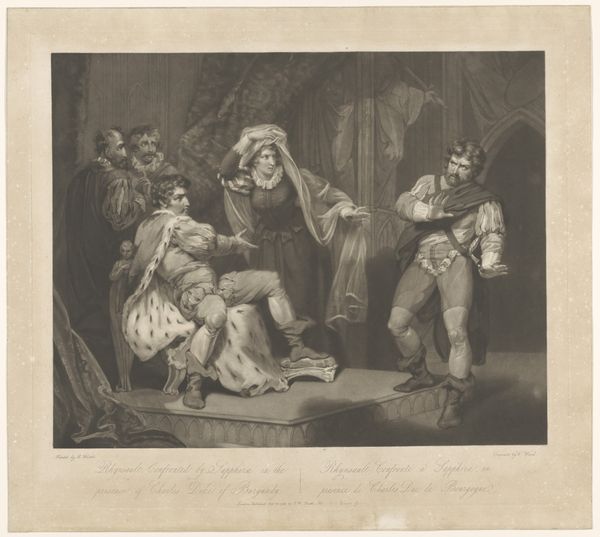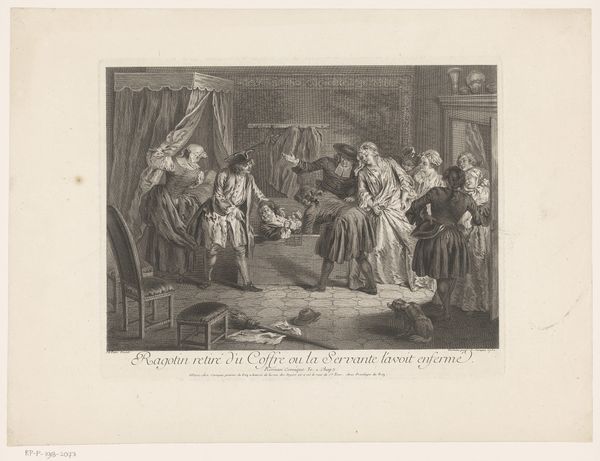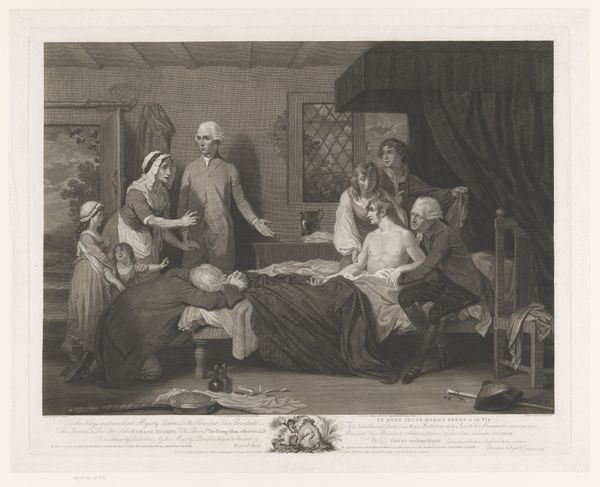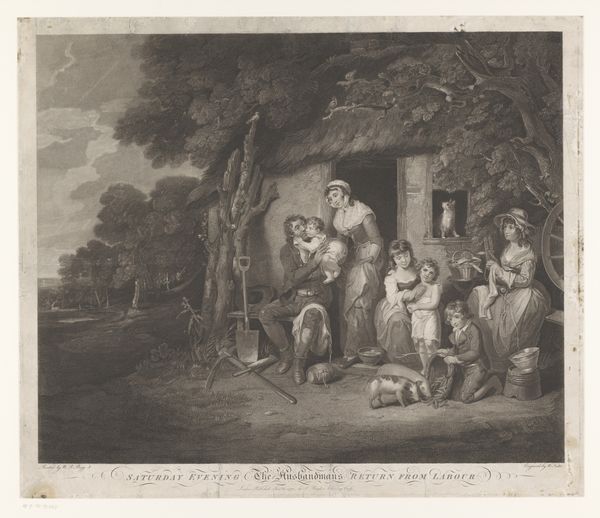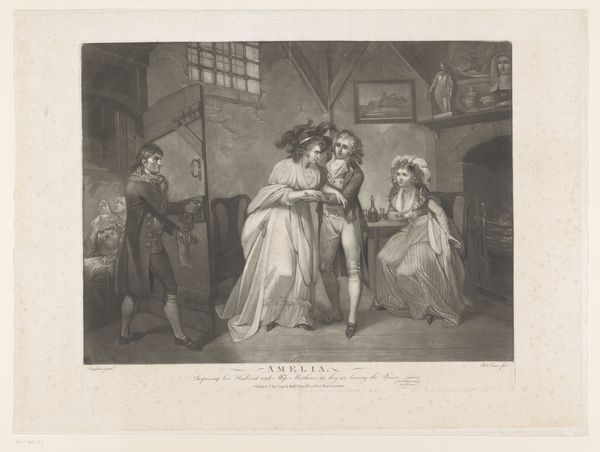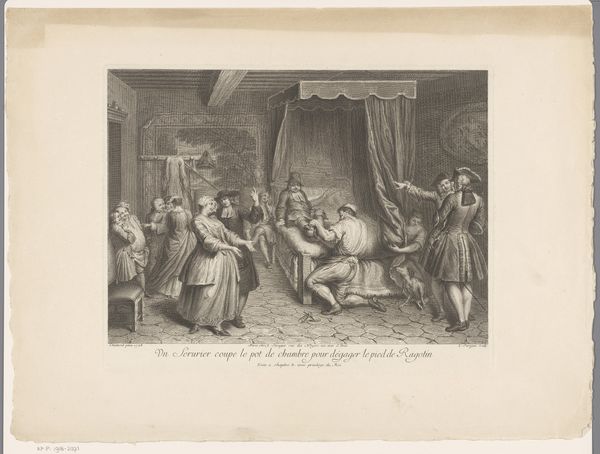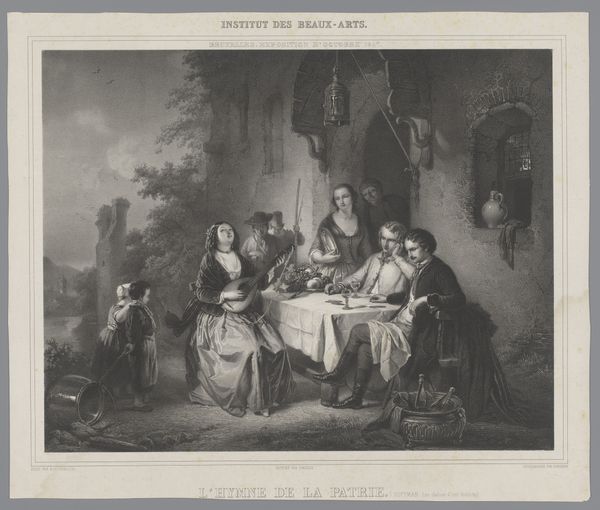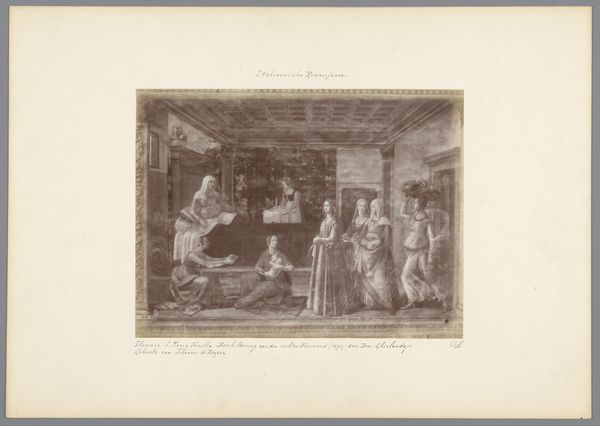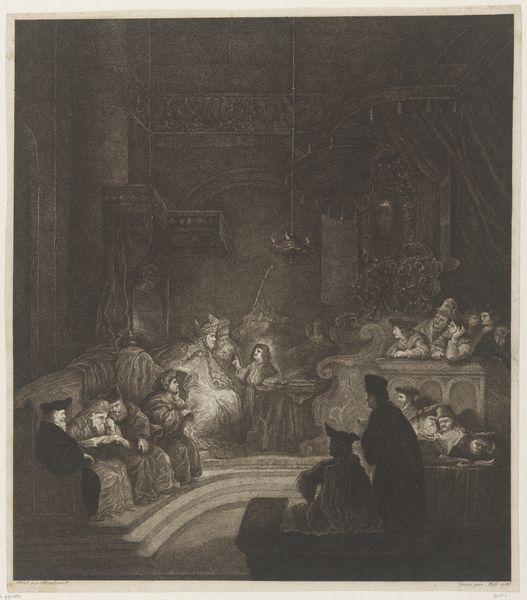
print, paper, engraving
#
print photography
#
neoclacissism
#
narrative-art
#
ink paper printed
# print
#
paper
#
genre-painting
#
history-painting
#
engraving
Dimensions: height 494 mm, width 615 mm
Copyright: Rijks Museum: Open Domain
Editor: This is "John Howard bezoekt een familie in de gevangenis," or "John Howard Visiting a Family in Prison," an engraving from 1790 by James Hogg. It has such a somber atmosphere; the composition is full of contrasting light and dark areas. What stands out to you when you look at this piece? Curator: The chiaroscuro is indeed compelling. Note how Hogg employs light not only to illuminate the figures but also to structure the composition. The strong diagonal of light slicing across the scene from upper right to lower left directs the eye and creates dramatic tension. Have you considered how the artist uses linear perspective? Editor: I see the converging lines of the architecture suggesting depth, but I didn’t consider its effect on the composition. It seems to emphasize the cramped, confined space. What would you say that accomplishes? Curator: Precisely. The compression of space contributes to the overall sense of oppression and confinement, amplifying the emotional impact of the scene. Moreover, note how the figures are arranged: they appear less as individuals, and more as a mass emphasizing unity in their suffering. Does this resonate with the Neoclassical movement? Editor: Definitely, there's a certain restraint in the portrayal of emotions, and a focus on conveying a message about morality. Curator: It does bear noting that there appears some theatrical staging, which reinforces its underlying conceptual design. In addition, reflect on the deliberate distribution of light and shadow and what message might the artist be trying to evoke? Editor: That’s an interesting point; perhaps it is the value of a structured composition in art! The artist isn’t just depicting a scene but trying to affect our view on the concept. Curator: Exactly! Studying its forms allows for a deeper understanding.
Comments
No comments
Be the first to comment and join the conversation on the ultimate creative platform.

